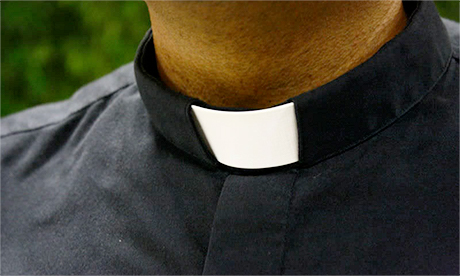As the human race joins the rest of the planet in a struggle for survival, the church is also trying to find its footing.
Why?
Clericalism.
For too long — say, 800 to 1,000 years — the sacramental life of the church has been under priestly lock and key.
Around the 10th century, the custom of stipends for Masses arose. Suddenly, the spiritual value of men’s prayers gained over the spiritual value of women’s prayers and women’s abbeys and monasteries failed one after another.
Coincidentally, the cursus honorum (“course of honor”) ended the diaconate as a permanent vocation.
Unless one was destined for priesthood, he could not be ordained as deacon.
Very few men became “permanent” deacons and women deacons — even abbesses — were no longer ordained.
Which brings us back to clericalism, the attitude that grace is dispensed to the people of God only by a cleric, preferably a priest.
Thousands of priests are not like that. But thousands are.
Pope Francis alluded to the problem in a recent homily. Eucharistic celebrations on television and radio, he said, create a “gnostic familiarity,” but not community.
Virtual celebrations provide some spiritual nourishment, but they are not “church.” As Francis said, church means coming together to share the bread.
The deeper problem with electronic Eucharists is they reduce prayer to priestly performance.
What is the difference between today and the 1950s, when the priest with his back to the congregation, mumbled on and on in Latin at “his Mass”?
What does participation in the Mass mean?
Some folks have taken to bringing their own bread and wine to the TV room or even performing do-it-yourself liturgies without a broadcasting priest.
Are these intended to do as the church does? Does either create the communion of church?
Then, there are other sacraments to think about. Drive-by confessions are an interesting innovation, but sacramental anointing of the thousands of dying COVID-19 patients is practically impossible. Marriages can be contracted without a priest, but far be it from chanceries to let that canon out of the book.
Here we go, one by one.
Confession
Recently, the pope pointed out that reconciliation can be postponed until the proper form is possible.
Despite historical documentation of confessing to laymen (notably on the battlefield), to abbesses and deacon-abbesses (within their territories), and to deacons, the canons of the 16th-century Council of Trent reserved sacramental reconciliation to priests granted juridical faculties from their bishops, and that has not changed.
Anointing
The sacrament of the sick, once occasionally administered by laypersons and often by women deacons (to other women), is now restricted to priests.
Confession occurs (if requested) prior to anointing, but only a priest, sometimes using an “instrument” to apply the oils, can anoint. Why can Canon 1000.2 not include a nurse or doctor as an “instrument”? The bishop of Springfield, Massachusetts, thought so, but the Curia quickly slammed that window down.
Marriage
Canon 1116 stipulates that if a proper minister (read: cleric) is not available in the foreseeable future, then two witnesses and the couple’s consent create a valid marriage.
Bishops in mission territories often grant faculties for witnessing marriage, and for solemnly baptizing, to lay ecclesial ministers (recall, 60% of Amazon parishes are managed by women), but the legal process can be cumbersome. Could the pandemic remind the church that couples administer this sacrament to each other?
So where is “church” in all this? Continue reading
